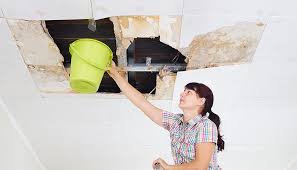Water damage can be destructive, whether from catastrophic events or overflowing bodies. In most cases, water intrusion occurs due to broken water pipes, leaky faucets, faulty washing machine hoses, and accumulated moisture.
Homeowners need to take every type of water damage seriously and follow appropriate water damage restoration to avoid weakening their home’s structural integrity. Below we discuss everything to know about water damage restoration:
Understanding Water Damage Restoration
Water damage mitigation and restoration starts with assessing the property to identify the amount of damage and underlying cause. After that, the water damage remediation team will repair your building.
But before we dive into the water damage restoration process, let’s discuss what causes this:
What Causes Water Damages?
Water damage can occur due to external or internal factors. These include:
- Catastrophes like hurricanes and floods
- Clogged gutter and downspout
- Cracked, warped, and split tile flooring
- Damaged chimneys and roof
- Faulty plumbing work
- Leaky windows and doors
- Leaking appliances or kitchen and bathroom fixtures
- Unsealed siding
How Do Water Damage Restoration Contractors Repair Water Damage
Professional water damage restoration contracts boast specialized training and experience in water extraction services, mitigation, and structural reconstruction. Let’s take a closer look at the water damage repairing and restoration process:
Inspection and Damage Assessment
The first in water damage restoration is inspecting the property to identify initial damages and safety issues. Unexpected water loss can create health hazards, and restoration companies know how to look for them.
Therefore, your water damage restoration team will develop an effective strategy to start repairing your building.
Water Extraction
The next step is removing water from your home or office. Your water damage repair and restoration team will use extraction units, flood pumps, and high-volume water vacuums to remove the excess water quickly and efficiently.
Demolition and Debris Removal
Sometimes, water damage can harm building materials, such as carpeting, drywall, and carpet padding beyond salvation.
Therefore, the water damage restoration contractor will remove the materials to expose wall cavities and subflooring to ensure an efficient drying and dehumidification process. If there is no damage, the restoration team will skip this and move on to the next step.
Drying and Dehumidification
Once the contractors remove the excess water and damaged materials, it’s time to start drying and dehumidifying. Here the water damage restoration team will remove existing moisture to mitigate the risk of bacterial growth and mold infestation.
The service providers will use air movers and desiccant dehumidifiers to protect your building from structural damage.
Contents Restoration
For severely damaged buildings, the last step is restoration and reconstruction. During this phase, the repair and restoration team will plumb, fix, and repair drywall and new carpeting.
It might also involve the installation of new cabinets, lighting, and finishing materials.
The Bottom Line
Water damage repair and restoration is a stressful and costly emergency. Not only does it hurt the structural integrity of your home, but it also risks your loved one’s health.
For this reason, you must save yourself from worsened damage by reaching out to a water damage remediation team. At Sapphire Restoration, our highly trained and experienced team of water damage restoration contractor create a fantastic repair and restoration plan to protect you and your home.



